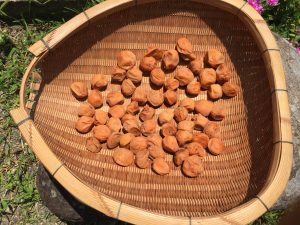Five Keys to Nagano’s Longevity, Making it the King of Japanese Blue Zones
Nagano Prefecture has been within the top 3 in the national longevity rankings in the last few times, and it is considered to be the longest-lived prefecture in Japan. Nagano also has the highest number of seniors working, indicating its high healthy lifespan. Actually, Okinawa has the lowest number of seniors working, and Nagano has twice as many seniors working. In fact, Nagano is the top in healthy lifespan both men and women.
So, what makes Nagano’s seniors be so vital. There are five keys to it according to Dr. Tetsushi Furukawa, the vice-principal of Tokyo Medical and Dental University.
1, Low Salt Diet
Nagano is one of the first prefectures that started the salt reduction movement, which is common today in many prefectures. In Japan, we use salt a lot in our cooking such as pickles and miso soup, and salt is one of the causes of conditions like high blood pressure. In 1980, their daily consumption in Nagano per person was 15,9g but in 1983, it was reduced to 11g.
2, Chewing a Lot
People in Nagano chew a lot. They spend 104 minutes on average for meals per day. This length is the third in the country.
3, Eating a Lot of Vegetables
They eat a lot of vegetables. Their daily vegetable consumption on average is 379g which is the top in the nation, too. The national average is 301g. Many vegetables contain a small amount of poison which is supposed to be good if it is a small amount.
4, Eating a Lot of Miso and Mushrooms
Their yearly consumption of miso and mushrooms is number one in Japan. Both miso and mushrooms contain a high amount of polyamine which has become known to be good for your health. Nagano is the biggest producer of both foods, as well, which means they consume local miso and mushrooms.
5, Drinking Local Red Wines
Nagano is the second biggest producer of both grapes and wine in Japan, the top being Yamanashi. While Yamanashi exports most of it, consuming only 1,5% locally, Nagano consumes 12% locally.
These are the five keys to Nagano’s longevity according to Dr. Tetsushi Furukawa.
As for salt, it was true in Dr. Shoji Kondo’s research on long-lived villages and short-lived villages. In the short-lived villages that he discovered, often people were eating 6 or 7 bowls of white rice, and to help eat rice they were eating salty pickles. In Tohoku, North Eastern area, especially, people used a high amount of salt in their pickles so that they can preserve them to go through a long winter, and it was the case in Nagano, too, being a cold country. So, they succeeded in salt reduction. Nevertheless, now I think people are getting too conscious about their salt intake. The problem is not the amount of salt but the type of salt they use. If you use natural sea salt, salt contains a lot of minerals, which can give you a lot of health benefits, too.
As for chewing, yes, we stress the importance of chewing in the Ikigai Diet, too. Chewing is one of the two key ingredients in the Ikigai Diet along with intermittent fasting.
Eating a lot of vegetables is a great factor, too. In Dr. Kondo’s research, people in long-lived villages were eating a lot of vegetables without exception. Dr. Furukawa mentioned a small poison, and I think he is talking about hormesis, which is known as in resveratrol of grapes. Okay, vegetables do have hormetic effects, too. That makes sense. Also, vegetables contain a lot of fiber, and fiber can feed your gut microbiomes.
As for miso and mushrooms, Dr.Furukawa said that they contained polyamine, and according to Dr. Tamotsu Yoshimori, who was a co-researcher of Dr. Yoshinori Ohsumi, the 2016 Nobel Prize winner in Physiology or Medicine, by discovering the mechanism of autophagy, the type of polyamine they contain is spermidine which can activate autophagy.
https://ikigaidiet.com/spermidine-an-autophagy-activating-polyamine/
If they consume a lot of miso and mushrooms, which I think are Shitake, their autophagy must have been activated.
The fact that they produce grapes and wine is wonderful. I feel like living in Nagano now. I can drink local wine there. We all know the benefits of red wine, and one problem we have in many parts of Japan is that wine is usually imported. Consuming local produce is always good from Shindofuji’s point of view. Local vegetables and fruit contain local bacteria which are suitable for your makeup.
https://ikigaidiet.com/nagano-a-new-japanese-blue-zone/
The Ikigai Diet: The Secret Japanese Diet to Health and Longevity
POD Paperback
https://www.amazon.com/gp/product/4991064864
Kindle
https://www.amazon.com/dp/B08JGB45HF

